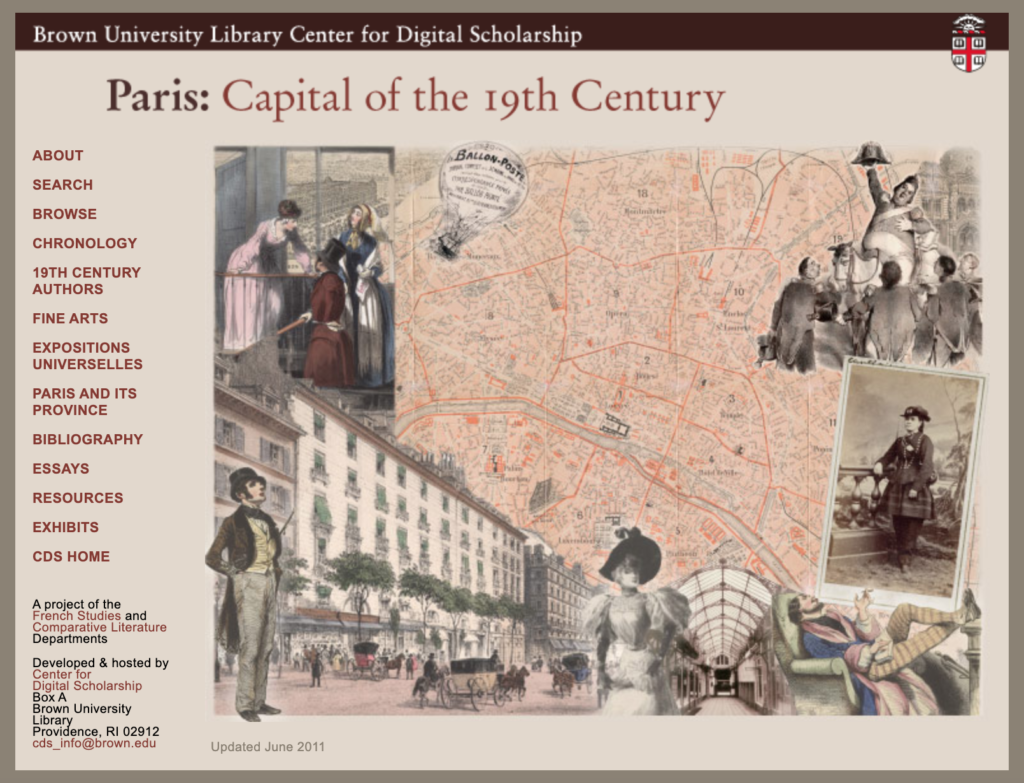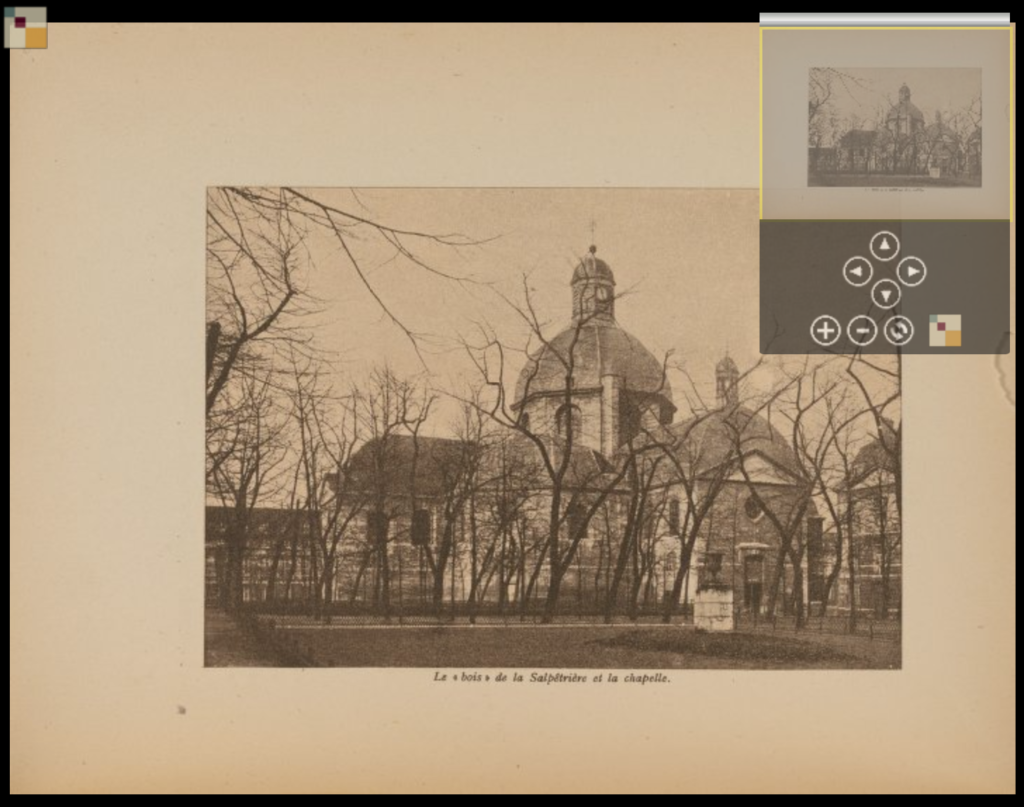In the second section of his essay “The Paris of the Second Empire in Baudelaire” [1] (entitled “The Flaneur”), Walter Benjamin presents a literature that could not appear in a setting other than the nineteenth century Paris. This panoramic literature, of which “the inconspicuous, paperback, pocket-size volumes called physiologies” are but an instance, is mean to be sold on the street [1]. According to Benjamin, “these works consist of individual sketches which, as it were, reproduce the dynamic foreground of those panoramas with their anecdotal form and the sweeping background of the panoramas with their store of information” [1]. It is when examining the question of what is the flaneur Baudelaire’s relationship with those works of a literature that I wandered into the site “Paris: Capital of the 19th Century” [2] for the purpose of obtaining a better understanding of what panoramic literature really is.

The website is painted mainly with the colors of brown (#4a2e2b), gallery (#E2D8CC), stonewall (#7B7367), crab apple (#853830) and copper rust (#914d43) according to a color analyzer. On each webpage of the site, a navigation sidebar menu is located on the left column whereas the main content is on the right.
The page that I browsed while studying about Benjamin’s text presents an essay revised in 2005, entitled “Panoramic Literature in 19th Century Paris: Robert Macaire as a Type of Everyday” [3]. If you scroll down to the very bottom of the page, you would find that this student essay was originally written in partial fulfillment of requirements for a class in 2004. The introduction of the essay provides me enough information to continue to read Benjamin. The author of the essay wants to know what is special about the hybrid panoramic literature, why it could not have existed in any other time or place, and what does its exceptionality tell about the culture of Paris in the nineteenth century [3]. In the introductory paragraphs, what has also been briefly mentioned is that panoramic literature is a product of the mechanical age in which printing technology is prevalent, paper is cheap and new modes of marketing and selling aid the reproduction of a variety of materials from the first daily newspaper to physiologies.
The “Paris: Capital of the 19th Century” site is a project of the Brown University French Studies and Comparative Literature Departments; developed and hosted by Brown’s Center for Digital Scholarship; constructed by PhD students and professors. As it claims in the “About This Site” page, the project aims at offering free access to the full texts and images of selected books and periodicals from the University’s Library collections – mainly, the Anne S. K. Brown Collection and the Starred Books Collection, so that researchers, students and faculty who are interested in history, art, literature of the 19th century Paris can use this site as a visual tool to facilitate their understanding of the complexities of this time-period [2]. Since the site offers a lot of ways to access the texts and images, navigating those paths towards data is just like navigating the streets of a city. Hyperlinks, search engines and filters are the available means of finding materials in which you might have an interest.
For example, in the “BROWSE” section, navigation buttons would lead you to all images collected by the library. Those images are sorted into categories in two ways; you can browse them either by metadata categories (“creators and contributors”, “subject”, and “title”) or by thematic categories (“historical period” and “thematic category”). Although labelling the last one “thematic category” makes the broader term “thematic categories” sound redundant, the image collection pages themselves are very easy to navigate.

By using the button next to the label “historical period” and then the button paired with “1852-1870 (The Second Empire)”, the reader is able to get to the page where the first image presented is edited by Geirges Guillain, published in 1925 and titled “Le “bois” de la Salpêtrière et la chapelle”. This image is “a view of the chapel of the hospital, taken from the adjoining woods. The chapel was commissioned in 1669 by Louis XIV” according to the description [4].
Overall, the site is like a huge collaborative notebook; every text or image of the selected material is annotated with explanatory notes. In addition, it also provides researchers a long yet useful annotated bibliography which can be accessed by a content filter. However, some of the contents of the website, just like some of the city paths, are temporarily blocked. You can only access from one side but not from the other. For instance, I am only able to get to the Panoramic Literature essay page by googling the key words “panoramic literature” but cannot work out how to get there through the entrance of the home page.
Reference
[1] W. Benjamin, “The Paris of the Second Empire in Baudelaire,” in The Writer of Modern Life: Essays on Charles Baudelaire, Cambridge, Mass: Harvard University Press, 2006.
[2] “Paris: Capital of the 19th Century,” Jun-2011. https://library.brown.edu/cds/paris/about.html (accessed Mar. 20, 2020).
[3] A. Zevin, “Panoramic Literature in 19th Century Paris: Robert Macaire as a Type of Everyday,” Paris: Captial of the 19th Century. https://library.brown.edu/cds/paris/Zevin.html (accessed Mar. 24, 2020).
[4] “LE ‘BOIS’ DE LA SALPÊTRIÈRE ET LA CHAPELLE,” Paris: Capital of the 19th Century. https://library.brown.edu/cds/catalog/catalog.php?verb=render&id=1399399202590012&colid=6&view=showmods (accessed Mar. 24, 2020).


